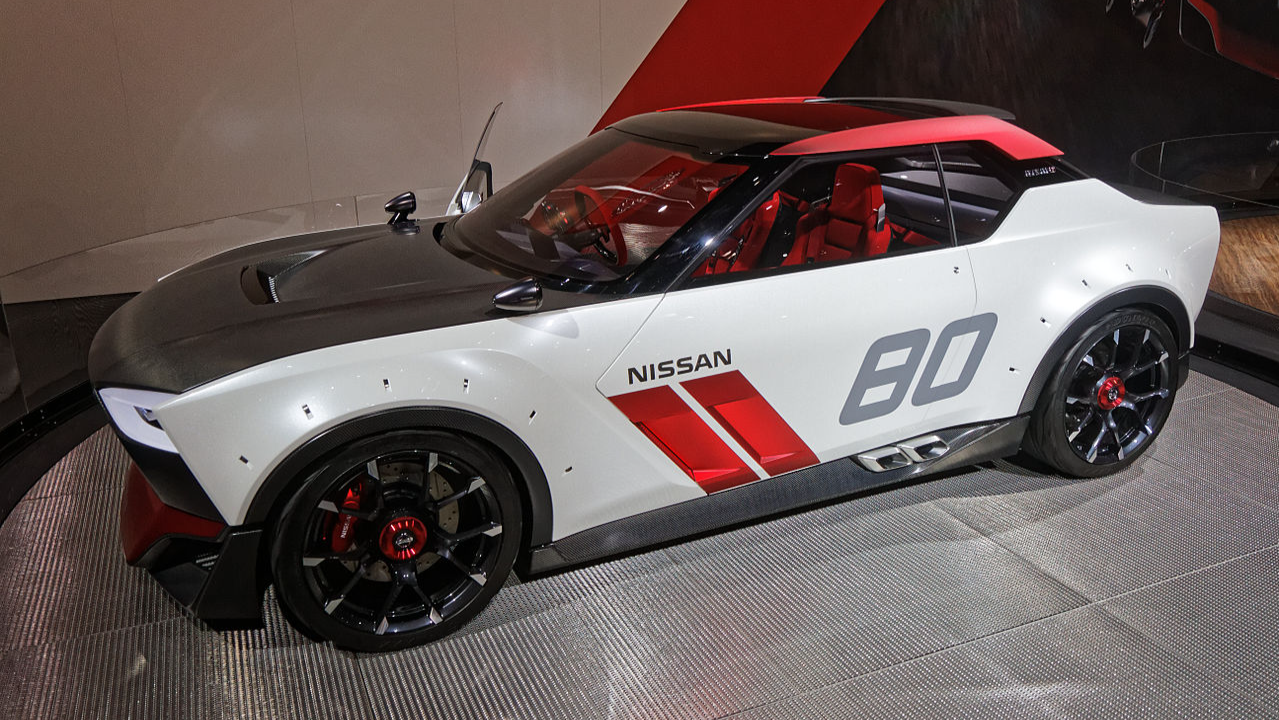13 Iconic Cars Cancelled Before Their Release

The history of the automobile is littered with what might very well be examples of unfulfilled potential. Many great cars got canceled before they had a chance to demonstrate their greatness.
The uncertainties of the automotive market, the complexities of the industry, and the fierce rivalries among automakers meant many seemingly promising prototypes never made it to the production line. To the eager consumers who waited forever for these concepts to materialize, they represent missed opportunities.
We’ll never know firsthand how they pushed the boundaries of vehicular technology, redefined automotive design, or pushed the performance envelope. They may not have lived out their destinies, but we’ll never forget them. Here are 13 intriguing prototypes canceled before their release.
Jaguar C-X75

That’s Hinx’s (Dave Bautista) car in the 2015 James Bond film Spectre. Jaguar unveiled it at the 2010 Paris Motor Show to celebrate its 75th birthday. Short for “Concept-X 75,” the C-X75 would’ve been a limited-run supercar with just 250 examples.
It was shown as a PHEV, using a quad e-motor setup with two micro gas turbines as range extenders. It was touted as capable of reaching 60 mph in 3 seconds and a top speed exceeding 200 mph.
The production version would’ve reportedly used a hybridized 1.6-liter four-cylinder engine developed by Williams Advanced Engineering. Unfortunately, Jaguar shelved the ambitious C-X75 project in 2012 due to the prohibitively high cost of making them — about £1 million (approximately $1.268 million) per car.
Volkswagen XL1

Efficiency was the XLI’s primary developmental goal — about 235 mpg (1 liter per 62 miles). It used an ultra-efficient plug-in hybrid system that combined a 0.8-liter two-cylinder TDI diesel engine with an electric motor and a 7-speed dual-clutch transmission (DSG).
The combined powerplant was good for a humble 68-hp, resulting in a leisurely sprint to 60 mph in 11.9 seconds and a 99 mph top speed. Performance was not the XL1’s strong suit, but it delivered an industry-leading drag coefficient (Cd) of just 0.189 and a stellar efficiency of 0.9 liters per 62 miles (or 261 mpg) under the European testing cycle.
It started life as the L1 concept and was finally unveiled as the XL1 at the 2011 Qatar Motor Show and in production form at the 2013 Geneva Motor Show. Volkswagen was smart enough to stop the ‘madness’ after just 250 units, seeing as they toted a price tag of around €111,000 (approximately $119,000). No matter how cool it looked, it didn’t make sense for a 68-hp car with a 31-mile electric range.
Cadillac Sixteen

Some say the Cadillac Sixteen was the most ambitious GM project in recent history. We’re inclined to agree. It is a prototypical luxury sedan inspired by the marque’s illustrious history harking back to the 1930s, ergo, its choice of of a burly V16 engine.
Cadillac unveiled it at the North American International Auto Show in Detroit. The V16 was built in-house by GM’s Performance Build Center (PBC) in Wixom, Michigan. It unleashed a mighty 1,000 hp and 1,000 lb-ft of torque.
Sadly, we’re still waiting for the Sixteen to grace our roads with its larger-than-life presence, measuring 228 inches long, 54 inches tall, and 7 inches wide.
Lincoln Continental Concept (2002)

Unveiled at the 2002 Los Angeles Auto Show, this modern take on the classic luxury sedan never made it past the concept stage. Lincoln hoped the car’s ambitious design would help revitalize the Lincoln brand by capturing its legacy of luxury and extravagance. Its design evoked the spirit of the 1961 Lincoln with Suicide doors.
While it never made it to the production line, the prototype inspired the design language of subsequent models. Lincoln eventually revived the Continental nameplate in 2016 with a new production model that tried to showcase some of 2002’s styling cues.
Mazda Furai

According to Furai, the true definition of “bad news” is when a concept car catches fire during testing. Mazda may say the Furai was never meant for the production line but as a test bed for future models and showcase the company’s design and engineering chops.
More importantly, the Furai was supposed to demonstrate the potential of Mazda’s rotary engine technology, so it hurt to see it meet a tragic end after burning beyond repair during a BBC’s Top Gear magazine photo shoot in 2008.
It was the last of Mazda’s Nagare (flow) design series. Top Gear blamed the fire on a ruptured fuel line that ignited the highly flammable ethanol fuel. The Furai’s cancellation was as much a loss to the automotive industry as to Mazda. Furai is Japanese for “sound of the wind,” a fitting name considering the car’s emphasis on aerodynamics and speed.
Chevrolet Code 130R

Unveiled at the 2012 North American International Motor Show in Detroit, the Code 130R concept would’ve been an affordable rear-wheel-drive Corvette coupe targeted at younger drivers. It was part of Chevrolet’s ambitious attempt at exploring new design directions and markets, but the company never got around to biting the bullet.
GM unveiled it alongside another concept — the Chevrolet Tru 140S. Both cars were aimed at the younger demographics and should’ve hit the production line if GM got a strong enough green light in the form of feedback from the target market.
Porsche 989

The 989 would’ve been the first 4-door Porsche long before the Cayenne SUV, Macan, Taycan, and Panamera. The idea of a 4-door Porsche sedan symbolizes an intriguing chapter in the German marque’s history. It must’ve been more than an attempt to expand the brand’s lineup in the late 1980s and early ‘90s.
The 989 project was born from Porsche’s curiosity and thirst for diversity in its product range. The company needed to make more money and sought a suitable tool to fight for a share in Mercedes-Benz, BMW, and Jaguar’s high-end luxury sedan markets.
Dr. Ulrich Bez, who’d later rise to prominence through his work with Aston Martin, led Porsche’s research and development team at the time. When he left Porsche in 1991, the new management shelved the 989 project.
Lotus M250

The M250 would’ve filled the gap left by Elise and Esprit. Lotus unveiled the mid-engine roadster concept in 1999 to compete in the entry-level sports car market. Naturally, the M250 benefited from Lotus’ renowned lightweight construction, featuring a 2.5-liter V6 engine on a bonded aluminum chassis.
The V6 came from the Opel Vectra. Sadly, the M250 project was shelved due to funding issues. It was one of several projects that fell victim to Lotus’ cost-cutting measures when the parent company, Proton, faced financial troubles in 2001. Be as it may, the M250 lives on in the styling cues of subsequent Lotus models such as the Elise.
Nissan IDX

The retro-inspired IDX compact coupe generated a lot of buzz following its unveiling at the 2013 Tokyo Motor Show but ultimately canceled as Nissan prioritized other projects. The project involved two prototypes: the IDX Freeflow and the sportier IDX Nismo.
Both were promising RWD sports cars that would’ve hit the market as affordable driver’s cars possessed by the spirit of classic Datsun models like the 510. We could blame Nissan’s decision to scrap the IDX project on the shifting trend towards SUVs and crossovers, emissions regulations, and a thousand other reasons.
Chrysler ME Four-Twelve

The Chrysler ME Four-Twelve was a highly anticipated quad-turbo V12-powered concept supercar with a mid-mounted engine. Chrysler unveiled the car in 2004, and we couldn’t wait to see it go toe-to-toe with the Porsches, Ferraris, and Lambos.
It featured a quad-turbocharged 6.0-liter V12 engine producing approximately 850-hp and 850 lb-ft of torque. It was enough to catapult the ME Four-Twelve to 60 mph in less than 3 seconds and a 240 mph top speed. Don’t you miss it already?
Volkswagen Golf R400

It was a high-performance Golf that Volkswagen canceled for no reason we were worthy to know. The “R400” meant it was good for 400-hp, enough to rocket the car to 60 mph in less than 4 seconds. By comparison, the most powerful production Golf, the R333, returned a 0 to 60 mph acceleration time of 4.6 seconds.
VW unveiled the R400 in 2014 at the Beijing Motor Show, showcasing by a tuned 2.0-liter turbocharged inline-four engine producing approximately 400-hp and 332 lb-ft of torque. The power was in good hands with VW’s famous 4Motion all-wheel-drive system designed for enhanced traction.
Buick Avista

General Motors unveiled the Avista 2-door coupe concept at the 2016 North American International Auto Show. It provided a glimpse into Buick’s future sports cars, assuming they actually got around to building one. It would be powered by a 400-hp twin-turbo 3.0-liter V6 mated to an 8-speed automatic transmission and RW drivetrain.
It wouldn’t be far-fetched to assume Buick ultimately scrapped the Avista because it lacked the courage to venture outside its traditional luxury brand comfort zone. It has always emphasized interior comfort and refined rides, and the high-performance sports coupe was a different segment it wasn’t ready to risk.
Honda NSX (2008)

An early attempt to revive the NSX with a V10 engine coincided with the 2008 economic downturn, though the NSX name was later reborn in a different form. It was supposed to carry on from where the original Honda/Acura NSX stopped in 2005, which would’ve made the 2008 model the 2nd-gen NSX.
In fact, various 2nd-gen NSX prototypes showed up in the mid-2000s. The cancellations were merely a delay. Honda eventually rolled out the 2nd-gen NSX in 2016, equipped with a twin-turbo V6 engine mated to a hybrid system.





